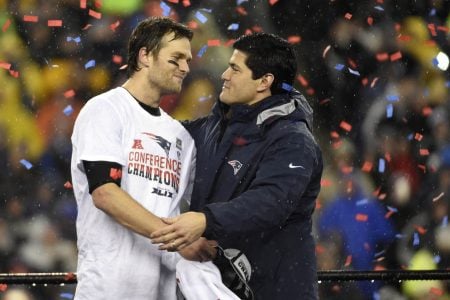VJCPatriot
Pro Bowl Player
- Joined
- Apr 28, 2006
- Messages
- 16,663
- Reaction score
- 5,239
Going into halftime - the Jets felt pretty good about themselves being down only 14-10 after being thoroughly outplayed by the Pats in the first half. The difference - icing the kicker. The Pats would have had 17 points, since Gostkowski made the first kick. But he was iced by the Jets' coach alert use of a timeout. He missed the second attempt much to tubby Rex' pleasure.
Near the end of the second half, the Jets kicker was about to kick the ball with 5 seconds left on the clock. You've got to wonder why the Pats didn't ice the Jets kicker at that point since that had happened to their own kicker. The Jets iced Gostkowski and it worked to make him miss the kick. Being up 17-7 is a big difference mentally between only being ahead 14-10. Even if the score is 14-7, at least the Jets don't feel good about scoring two drives in a row to end the half. That built up their confidence.
Although the tactic of icing the kicker is purely mental it seems to work. For example in the Texans game in overtime, the coach, Kubiak, iced the Redskins kicker. The guy made the first kick and missed the second one. Texans went on to win that game. So were our coaches asleep at the switch? Why didn't you ice their kicker, BB?
Near the end of the second half, the Jets kicker was about to kick the ball with 5 seconds left on the clock. You've got to wonder why the Pats didn't ice the Jets kicker at that point since that had happened to their own kicker. The Jets iced Gostkowski and it worked to make him miss the kick. Being up 17-7 is a big difference mentally between only being ahead 14-10. Even if the score is 14-7, at least the Jets don't feel good about scoring two drives in a row to end the half. That built up their confidence.
Although the tactic of icing the kicker is purely mental it seems to work. For example in the Texans game in overtime, the coach, Kubiak, iced the Redskins kicker. The guy made the first kick and missed the second one. Texans went on to win that game. So were our coaches asleep at the switch? Why didn't you ice their kicker, BB?
Last edited:

















